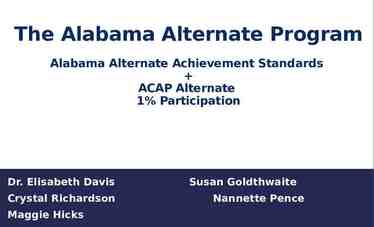CSP Program Summit 2016 Supercritical CO2 Power Cycles: Next-Gen
22 Slides4.64 MB
CSP Program Summit 2016 Supercritical CO2 Power Cycles: Next-Gen Power for CSP? energy.gov/sunshot CSP Program Summit 2016 energy.gov/sunshot Craig Turchi Sr. Engineer, National Renewable Energy Laboratory [email protected]
Outline History of closed Brayton Cycles Attributes that are attractive for CSP sCO2 Brayton Cycle designs tailored for CSP Current state of development and the “STEP” initiative CSP Program Summit 2016 energy.gov/sunshot 2
Open Brayton Power Cycle Fuel Fossil-fired combustion GE LM6000 turbine Combustionpower Turbine plant (www.tva.com) CSP Program Summit 2016 energy.gov/sunshot 33
Closed Brayton Power Cycle Heat Recuperator Indirect heating via an external source Any gas or supercritical fluid can be used Working fluid circulates in a closed loop CSP Program Summit 2016 energy.gov/sunshot 44
Brief History of the Closed Brayton Cycle (CBC) 1939 First commercial air-CBC at Escher Wyss in Zurich 1949 Air-CBC efficiency greater than contemporary steam cycles 1956 Ravensburg air-CBC comes online. Plant accumulates 120,000 hrs operation at average 91% availability CSP Program Summit 2016 energy.gov/sunshot 55
Ravensburg Plant (1956-1977) 10 MWth , 2.3 MWe 660 C hot gas temp Representation of the turboset: 3-stage radial compressor and 5-stage axial turbine CSP Program Summit 2016 energy.gov/sunshot Images from Pasch, San Antonio, TX, 2012 Original reference: Frutschi, Closed-Cycle Gas Turbines (2005) 6
Brief History of the Closed Brayton Cycle (CBC) 1939 First commercial air-CBC at Escher Wyss in Zurich 1949 Air-CBC efficiency greater than contemporary steam cycles 1956 Ravensburg air-CBC comes online. Plant accumulates 120,000 hrs operation at average 91% availability 1967 Feher catalogs candidate supercritical fluids for use in CBC 1968 Angelino proposes the “recompression” sCO 2 power cycle 2004 Dostal rekindles interest in sCO2-CBC by examining its use for Gen IV nuclear power plants 2009 Sandia National Labs builds 250 kW e recompression cycle at BarberNichols in Arvada, CO 2012 Echogen Power Systems designs 7 MWe sCO2 system for waste heat recovery 2014 DOE forms Supercritical Transformational Electric Power (STEP) cross-cut initiative with Fossil, Nuclear, EERE, and Basic Energy Science programs CSP Program Summit 2016 energy.gov/sunshot 77
Why sCO2? 6 CO2 inventory control 1 4 2 3 5 Density and Heat Capacity Yoo, 2012 CSP Program Summit 2016 energy.gov/sunshot 88
Power Cycle Options for CSP 65% Thermal Conversion Efficiency 60% Typical Engineering Limit (75% Carnot) 55% S-CO2 Brayton (recompression) 50% Air Brayton Combined Cycle (commercial for NG) Supercritical Steam (commercial for coal) 45% Current Power Tower 40% Current Parabolic Trough 35% 30% 300 Power Tower Range 400 500 600 700 800 900 1000 1100 1200 1300 1400 Temperature, C CSP Program Summit 2016 energy.gov/sunshot 9
Attractive features of sCO2 Brayton Cycle Higher efficiency than steam Rankine High density working fluid yields compact turbomachinery Optimum turbine size 10 to 300 MWe Low-cost, low toxicity, low corrosivity fluid Thermally stable fluid at temperatures of interest to CSP (550 C to 750 C) Single phase reduces operational complexity; integrates well with sensible heat storage in CSP systems Simpler cycle design than steam Rankine CSP Program Summit 2016 energy.gov/sunshot MIT depiction of 150 MWe recompression-cycle power system (2006) 10 10
Potential in Multiple Markets Industry interest Power Sector Why? Who? Nuclear Good match to Gen IV sodium fast reactor designs Sandia, Argonne, INL Fossil Next generation coal plants with oxy-fuel combustion and CO2 capture NETL, Gas Tech Institute (GTI), Toshiba, NetPower Marine Power Compact and fast responding turbomachinery US Navy via Knolls and Bettis Atomic Power Labs Waste Heat Recovery Simple cycle design with high efficiency Echogen, Dresser-Rand (Siemens), GE Solar Allows for higher conversion efficiency in high-temperature power towers GE, Samsung, CSIRO, NREL Grid Electricity Storage Reversible cycle: heat pump/power turbine ABB, GE, others CSP Program Summit 2016 energy.gov/sunshot 11
sCO2 Cycle Design Considerations for CSP Conditions Optimize for molten-salt thermal storage by maximizing ΔT across turbine and storage system CSP Program Summit 2016 energy.gov/sunshot Neises and Turchi, “A comparison of supercritical carbon dioxide power cycle configurations with an emphasis on CSP applications,” Energy Procedia 2014. 12
sCO2 Cycle Design Considerations for CSP Conditions Most sCO2 cycle designers plan for a wet-cooled system: CIT 32 C CIP 7.7 MPa CSP will likely require a dry-cooled system, for example CIT 50 C. Compressor (and cycle) efficiency is optimized by increasing CIP 10 MPa MC Main compressor CIT Compressor Inlet Temperature CIP Compressor Inlet Pressure CSP Program Summit 2016 energy.gov/sunshot Gong, et al, “Analysis of Radial Compressor Options for Supercritical CO2 Power Conversion Cycles,” 2006 13
CSP with sCO2 Conceptual Design – example one Dry-cooled, “partial-cooling” cycle coupled to hightemperature molten salt power tower (or particle receiver) CSP Program Summit 2016 energy.gov/sunshot 14
CSP with sCO2 Conceptual Design – example two Direct-heated, small-capacity, tower-mounted “simple recuperated” cycle coupled to PCM thermal energy storage Utilizes compact size of the sCO2 power system at 10 MWe capacity Allows for factoryfabrication of power block PCM or thermochemical storage with narrow T CSP Program Summit 2016 energy.gov/sunshot 15
sCO2 Brayton Cycle Research Activities Corrosion and materials compatibility data at high T, P Cost-effective and durable recuperators Design and validation of primary heat exchangers; understanding of sCO2/HTF interactions Validation of power turbine bearings, seals, stop-valves Modeling start/stop, off-design and other transient operations Cycle operating methodology for dry-cooled systems Demonstration of cycle operations and equipment durability at commercially relevant scale (10 MWe) CSP Program Summit 2016 energy.gov/sunshot 16 16
Journal Publications Web of Science search for: “supercritical brayton” OR “supercritical CO2 power cycle” 60 50 40 30 20 10 0 . 80 9 1 6 0 20 CSP Program Summit 2016 energy.gov/sunshot 7 0 20 8 0 20 9 0 20 0 1 20 1 1 20 2 1 20 3 1 20 4 1 20 5 1 20 17 17
Supercritical Transformational Electric Power (STEP) Cross-program DOE initiative to demonstrate the sCO2 power cycle at commercial scale. Up to 80M federal contribution, 20% industry cost share, and 6-year duration (see DE-FOA-0001457, released March 2016) 10 MWe Pilot Plant Test Facility: sCO2 Recompression Brayton Cycle at turbine inlet operating temperatures of 700 C, Reconfigurable facility to support testing a variety of components or subsystems, and Capability to monitor and characterize primary components or subsystems (turbomachinery, heat exchangers, recuperators, bearings, seals, etc.) Map pathway towards an overall power cycle efficiency of 50% or greater Demonstrate steady-state, dynamic, transient load following, and limited endurance operations CSP Program Summit 2016 energy.gov/sunshot 18 18
Summary The sCO2 power cycle is potentially simpler and more efficient than steam-Rankine cycles in many applications Applications include: advanced nuclear, fossil, solar-thermal, and waste-heat recovery heat sources Major research institutions and power companies from around the world are engaged in its development E.g., GE, Dresser-Rand, Toshiba, Samsung The STEP initiative plans to demonstrate a commercial-scale system in five years sCO2 power cycles optimized for CSP could provide the CAPEX and efficiency needed to achieve SunShot CSP Program Summit 2016 energy.gov/sunshot 19 19
Thank you! CSP Program Summit 2016 energy.gov/sunshot 20
Brief History of the Closed Brayton Cycle (CBC) 1939 First commercial air-CBC at Escher Wyss in Zurich 1949 Air-CBC efficiency greater than contemporary steam cycles 1956 Ravensburg air-CBC comes online. Plant accumulates 120,000 hrs operation at average 91% availability 1967 Feher catalogs candidate supercritical fluids for use in CBC 1968 Angelino proposes the “recompression” sCO 2 power cycle 2004 Dostal rekindles interest in sCO2-CBC by examining its use for Gen IV nuclear power plants 2009 Sandia National Labs builds 250 kW e recompression cycle at BarberNichols in Arvada, CO 2012 Echogen Power Systems designs 7 MWe sCO2 system for waste heat recovery 2014 DOE forms Supercritical Transformational Electric Power (STEP) cross-cut initiative with Fossil, Nuclear, EERE, and Basic Energy Science programs CSP Program Summit 2016 energy.gov/sunshot 21 21
10 MWe Turbomachinery: Threshold for commercial viability CSP Program Summit 2016 energy.gov/sunshot 22 22



























